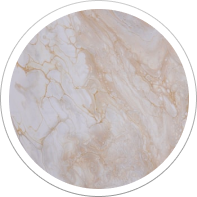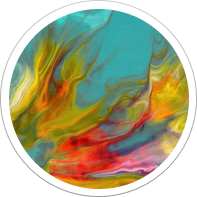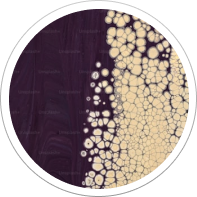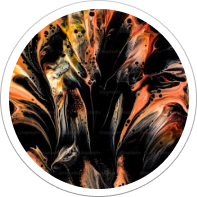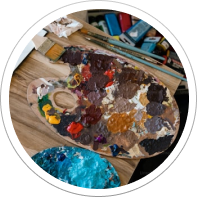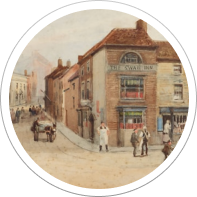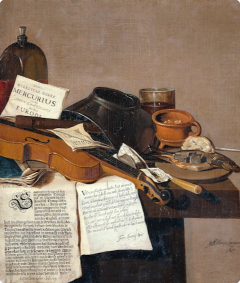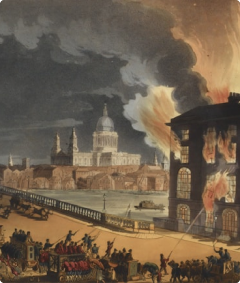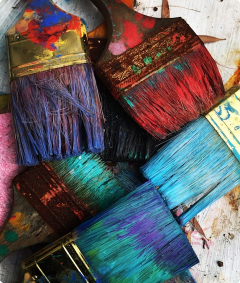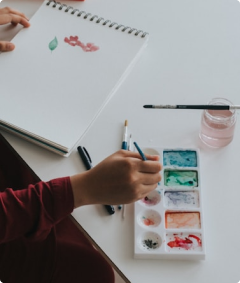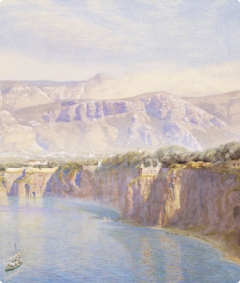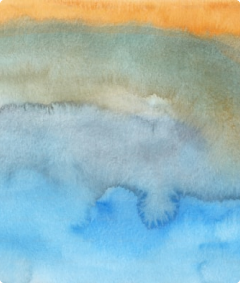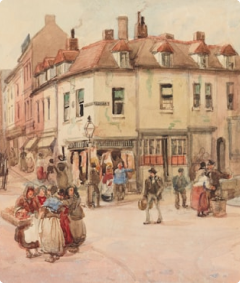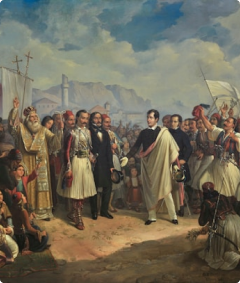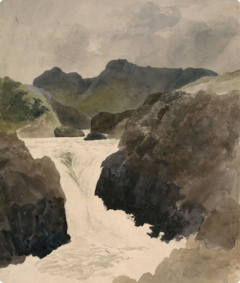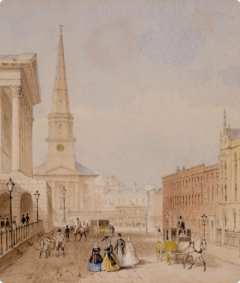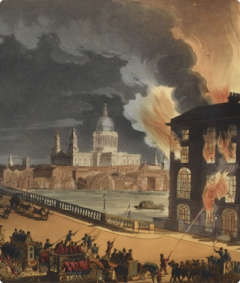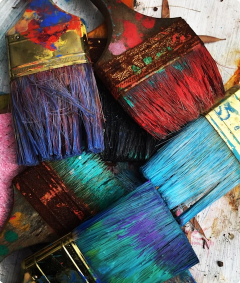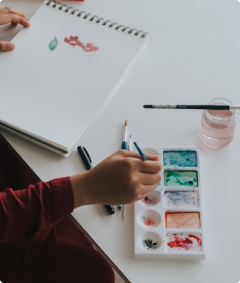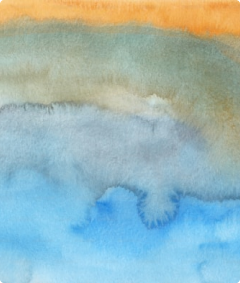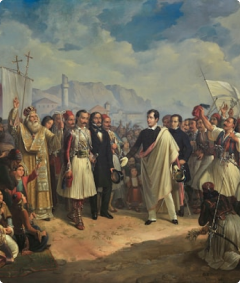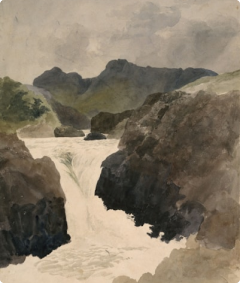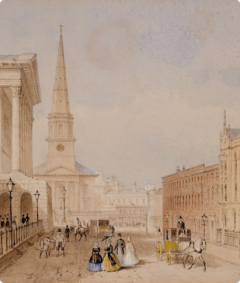
Top Seller
Canvas Prints & Photo Tiles, Wall Art from Jodello
Transform your space with Jodello’s canvas prints, photo tiles, and custom wall art. Turn memories and designs into stunning decor that reflects your unique style.
Get Started
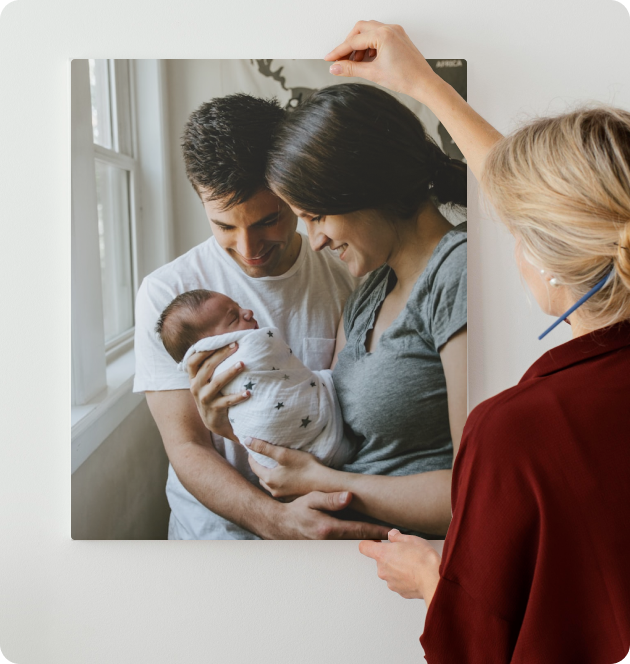






How It Works:
Transform your space with Jodello’s canvas prints, photo tiles, and custom wall art.

1. Add Photos
Upload your favorite moments.

2. We Deliver
Get your custom prints fast.

3. You Stick
Peel, stick, and transform your walls effortlessly.

Featured Categories

Your Cherished Moments, Beautifully Displayed
Transform your space with top-quality, customizable canvas prints. From cherished moments to stunning artwork, Jodello offers a seamless way to craft beautiful pieces that showcase your unique taste.
Get Started
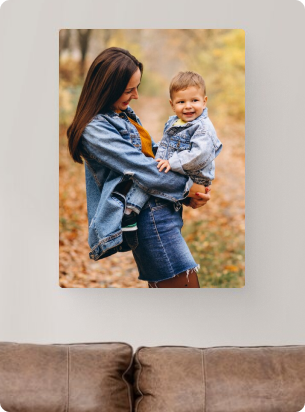
Why You'll Love Jodello

Seamless Installation
Easy-to-mount prints, no tools needed

No Damage, No Hassle
Sticks securely, removes cleanly

Endlessly Customizable
Designs that fit your style effortlessly

Customer Testimonials
Discover the conversations happening around our brand and see what our customers are saying about their experiences with us.
"I recently purchased a stunning canvas from Jodello, and I couldn't be happier with my choice! The vibrant colors and exquisite detail have truly transformed my living room. “


Liam Carter
"I recently purchased a stunning canvas from Jodello, and I couldn't be happier with my choice! The vibrant colors and exquisite detail have truly transformed my living room. “


Liam Carter
"I recently purchased a stunning canvas from Jodello, and I couldn't be happier with my choice! The vibrant colors and exquisite detail have truly transformed my living room. “


Liam Carter
FAQs
Easy-to-mount prints, no tools needed
Easy-to-mount prints, no tools needed
Easy-to-mount prints, no tools needed
Easy-to-mount prints, no tools needed
Easy-to-mount prints, no tools needed
Easy-to-mount prints, no tools needed
Easy-to-mount prints, no tools needed
Easy-to-mount prints, no tools needed
Cheap Canvas Photo Prints & Picture Prints: The Ultimate Comprehensive Guide
Wall art possesses an extraordinary capacity to metamorphose any living space, breathing vitality into sterile environments while simultaneously reflecting the distinctive personality and aesthetic preferences of its inhabitants. Among the myriad decorative mediums available to contemporary homeowners and interior design enthusiasts, canvas picture prints for wall art have emerged as an exceptionally popular choice, captivating both seasoned art connoisseurs and casual decorators seeking to enhance their surroundings. These remarkable prints seamlessly blend sophistication with practicality, offering an unparalleled combination of visual appeal, longevity, and affordability that has revolutionized the way we approach interior decoration.
The transformation of blank walls into captivating focal points requires careful consideration of numerous factors, from color harmony and spatial proportions to thematic coherence and personal significance. Canvas picture prints provide an ideal solution for this decorative challenge, offering endless possibilities for customization while maintaining the timeless elegance associated with traditional artistic mediums. Whether adorning residential spaces, commercial establishments, or professional offices, these versatile prints have demonstrated their ability to enhance virtually any environment with their unique aesthetic qualities and practical benefits.
Understanding Canvas Picture Prints and Their Distinctive Characteristics
Canvas picture prints represent a sophisticated form of artistic reproduction that utilizes specialized fabric substrates to recreate images, photographs, and artwork with remarkable fidelity and visual impact. Unlike conventional paper-based prints or glossy photographic reproductions, canvas prints employ high-quality textile materials that provide a distinctive textural surface reminiscent of traditional oil paintings and watercolor masterpieces. This unique characteristic immediately distinguishes canvas prints from their paper counterparts, offering a more refined and artistic appearance that elevates any decorative scheme.
The fundamental structure of canvas picture prints consists of carefully selected fabric materials, typically cotton, polyester, or specialized blends, which serve as the foundation for high-resolution image reproduction. These fabrics undergo rigorous preparation processes to ensure optimal ink absorption and color retention, creating an ideal surface for professional-grade printing equipment. The resulting prints exhibit exceptional detail clarity, vibrant color reproduction, and a natural matte finish that eliminates unwanted glare and reflections commonly associated with traditional framed photographs.
Modern canvas printing techniques utilize state-of-the-art digital printing equipment capable of producing museum-quality reproductions with extraordinary precision and color accuracy. The printing process involves the application of archival-quality inks that penetrate deeply into the canvas fibers, creating a permanent bond that resists fading, cracking, and deterioration over extended periods. This sophisticated approach ensures that canvas picture prints maintain their visual appeal and structural integrity for decades when properly cared for and displayed.
The versatility of canvas picture prints extends beyond their aesthetic qualities to encompass their adaptability to various display methods and environmental conditions. Unlike traditional framed artwork that requires protective glass or acrylic coverings, canvas prints can be displayed without additional protective barriers, making them ideal for high-traffic areas, humid environments, and spaces where safety concerns might preclude the use of glass-covered artwork. This practical advantage, combined with their inherent durability, makes canvas prints particularly suitable for family homes, educational institutions, healthcare facilities, and commercial establishments.
Contemporary canvas printing capabilities have expanded to accommodate an impressive range of image types and artistic styles, from photorealistic portraits and landscape photography to abstract digital artwork and vintage illustrations. The medium's ability to faithfully reproduce fine details while maintaining the organic texture characteristic of traditional canvas paintings makes it an ideal choice for recreating both classical masterpieces and contemporary artistic creations. This versatility allows decorators to achieve their desired aesthetic vision regardless of their preferred artistic style or thematic approach.
Remarkable Benefits and Advantages of Canvas Wall Art
The exceptional durability of canvas picture prints stands as one of their most compelling attributes, setting them apart from virtually every other form of decorative wall art available in today's market. Canvas fabric possesses inherent strength and flexibility that allows it to withstand environmental fluctuations, mechanical stress, and normal wear without compromising its structural integrity or visual appeal. This remarkable resilience stems from the natural properties of canvas fibers, which have been utilized for centuries in maritime applications and fine art creation due to their ability to maintain stability under challenging conditions.
Professional-grade canvas prints undergo specialized treatment processes that further enhance their longevity and resistance to common forms of deterioration. These treatments include UV-protective coatings that shield the printed image from harmful ultraviolet radiation, moisture-resistant applications that prevent humidity-related damage, and anti-microbial treatments that inhibit the growth of mold and mildew in humid environments. Such comprehensive protection ensures that canvas picture prints retain their original appearance and structural soundness for decades, making them an excellent long-term investment for any decorative scheme.
The aesthetic advantages of canvas picture prints extend far beyond their practical durability to encompass their unique visual characteristics and artistic appeal. The textured surface of canvas creates subtle variations in light reflection that add depth and dimension to printed images, producing a three-dimensional quality that flat paper prints cannot replicate. This textural richness enhances the viewing experience by creating visual interest that changes subtly with varying lighting conditions and viewing angles, ensuring that canvas prints remain engaging and dynamic throughout the day.
Canvas prints offer unparalleled versatility in terms of display options and environmental compatibility, making them suitable for virtually any interior space or decorative theme. Unlike traditional framed artwork that requires specific lighting conditions and careful positioning to avoid glare, canvas prints can be effectively displayed under various lighting scenarios without compromising their visual impact. This adaptability makes them ideal for spaces with challenging lighting conditions, such as rooms with large windows, artificial lighting systems, or mixed lighting sources.
The customization possibilities offered by modern canvas printing services have revolutionized personal expression through wall art, allowing individuals to transform their most cherished memories, artistic creations, and meaningful images into professional-quality wall decorations. This personalization capability extends beyond simple image reproduction to include various artistic treatments, sizing options, and finishing techniques that can dramatically alter the final appearance and impact of the printed piece. Such flexibility enables decorators to create truly unique wall art that perfectly aligns with their personal vision and aesthetic preferences.
Canvas picture prints provide an accessible entry point into art collecting and appreciation, offering an affordable alternative to original artwork without sacrificing visual impact or artistic merit. For individuals who appreciate fine art but lack the financial resources to acquire original paintings or limited edition prints, canvas reproductions provide an opportunity to enjoy masterful artwork in their daily environment. This democratization of art appreciation has made it possible for people from all economic backgrounds to surround themselves with beautiful, meaningful artwork that enhances their quality of life and cultural enrichment.
Professional Production Methods and Quality Considerations
The creation of premium canvas picture prints involves a sophisticated multi-stage process that combines traditional artistic techniques with cutting-edge digital printing approaches to achieve exceptional results. This comprehensive production methodology begins with meticulous image preparation, where digital files undergo extensive optimization to ensure optimal print quality and color accuracy. Professional print technicians analyze each image for resolution adequacy, color balance, contrast optimization, and potential printing challenges that might affect the final product quality.
Image selection and preparation represent critical factors in determining the ultimate success of canvas picture prints, requiring careful attention to technical specifications and artistic considerations. High-resolution source images provide the foundation for exceptional print quality, with professional standards typically requiring a minimum resolution of 300 dots per inch at the intended print size. Images with insufficient resolution may exhibit pixelation, softness, or other quality issues that compromise the final product's visual appeal and professional appearance.
Canvas material selection plays a pivotal role in determining both the aesthetic characteristics and longevity of the finished print, with various fabric options offering distinct advantages and visual qualities. Premium cotton canvas provides exceptional durability and a traditional artistic texture that closely resembles the surfaces used by master painters throughout history. Polyester canvas materials offer enhanced moisture resistance and dimensional stability, making them ideal for humid environments or spaces subject to temperature fluctuations. Specialized canvas blends combine the benefits of multiple fiber types to create optimized printing surfaces that excel in specific applications or environmental conditions.
The printing phase employs sophisticated wide-format digital printing equipment capable of producing museum-quality reproductions with extraordinary color accuracy and detail resolution. Professional canvas printing utilizes archival pigment inks that offer superior lightfastness and longevity compared to conventional dye-based printing systems. These premium inks create permanent chemical bonds with canvas fibers, resulting in prints that maintain their original vibrancy and clarity for decades under normal display conditions.
Stretching and mounting procedures require skilled craftsmanship to ensure that canvas prints achieve proper tension distribution and visual presentation while maintaining long-term structural stability. Professional stretching involves carefully positioning the printed canvas over precisely constructed wooden frames, known as stretcher bars, which provide the necessary support structure for proper display. The stretching process must achieve uniform tension across the entire canvas surface to prevent sagging, warping, or other distortions that could compromise the print's appearance and longevity.
Quality control measures throughout the production process ensure that each canvas picture print meets rigorous standards for color accuracy, print clarity, and structural integrity. Professional printing facilities employ calibrated color management systems that maintain consistent color reproduction across different production runs and equipment configurations. Additionally, experienced quality assurance technicians inspect each print for potential defects, color variations, or structural issues before final packaging and shipment to customers.
Strategic Selection Guidelines for Optimal Results
Selecting the ideal canvas picture print for your specific space requires careful consideration of multiple interconnected factors that influence both the immediate visual impact and long-term satisfaction with your decorative choice. The size relationship between your chosen canvas print and the surrounding architectural elements represents one of the most crucial decisions in the selection process, as improper proportions can dramatically affect the overall visual balance and aesthetic harmony of your space.
Dimensional considerations extend beyond simple measurement calculations to encompass the psychological and visual effects of scale on human perception and spatial awareness. Large-scale canvas prints create commanding focal points that draw attention and establish visual hierarchy within a room, making them ideal for spacious areas with high ceilings or expansive wall surfaces. Conversely, smaller prints work effectively in intimate settings or as components of larger gallery wall compositions where multiple pieces work together to create a cohesive visual narrative.
Color harmony between your selected canvas print and existing interior elements requires sophisticated understanding of color theory principles and their practical applications in residential and commercial environments. Successful color coordination involves analyzing the dominant, secondary, and accent colors present in your space, including furniture upholstery, window treatments, flooring materials, and architectural features. Canvas prints can serve various coloristic functions within your decorative scheme, from providing bold contrast that energizes neutral spaces to offering subtle tonal variations that enhance existing color palettes.
Stylistic coherence ensures that your canvas picture print seamlessly integrates with your existing decorative theme while potentially introducing fresh elements that prevent visual stagnation. Contemporary interior design approaches often embrace eclectic mixing of styles, periods, and artistic movements, creating opportunities for canvas prints to serve as transitional elements that bridge different aesthetic approaches. Understanding the visual language of various artistic styles enables more informed selection decisions that enhance rather than conflict with your existing decorative investments.
Lighting conditions within your intended display space significantly influence both the selection and positioning of canvas picture prints, affecting color perception, contrast visibility, and overall visual impact. Natural lighting varies throughout the day and across seasons, creating dynamic viewing conditions that can dramatically alter the appearance of canvas prints depending on their color palette and subject matter. Artificial lighting systems, including incandescent, fluorescent, and LED sources, each possess distinct spectral characteristics that interact differently with printed colors and canvas textures.
Personal significance and emotional resonance represent intangible but equally important factors in the selection process, as the most technically perfect canvas print will fail to provide lasting satisfaction if it lacks meaningful connection to the viewer's experiences, values, or aspirations. Successful wall art selection often involves identifying images that evoke positive emotional responses, commemorate significant life events, or represent personal interests and passions that contribute to the overall sense of comfort and belonging within your space.
Creative Display Concepts and Arrangement Strategies
The artistic arrangement of canvas picture prints opens infinite possibilities for creative expression and visual storytelling that transcends simple decorative placement to create sophisticated design statements. Gallery wall compositions represent one of the most popular and effective approaches to displaying multiple canvas prints, allowing for dynamic combinations of sizes, subjects, and styles that create visual rhythm and narrative flow throughout a space. These curated collections can evolve organically over time, accommodating new additions and seasonal rotations that keep your decorative scheme fresh and engaging.
Symmetrical arrangements provide classical elegance and formal balance that complements traditional interior design approaches while creating a sense of order and sophistication. These compositions typically employ identical or similar-sized canvas prints arranged in geometric patterns that emphasize architectural features and create focal points around furniture groupings. Symmetrical displays work particularly well in formal living areas, dining rooms, and professional environments where visual stability and refined presentation are desired.
Asymmetrical compositions offer contemporary flair and dynamic visual interest that reflects modern design sensibilities and creative expression. These arrangements intentionally break traditional symmetry rules to create engaging visual tension and movement that draws the eye through carefully planned viewing sequences. Asymmetrical displays require more sophisticated design understanding but offer greater flexibility for incorporating diverse print sizes, subjects, and styles within cohesive overall compositions.
Thematic groupings allow for storytelling through visual art, creating narrative connections between individual canvas prints that enhance their collective impact and meaning. Travel photography collections can transport viewers to distant locations and cherished memories, while nature-themed groupings bring the tranquility and beauty of outdoor environments into indoor spaces. Family portrait collections celebrate personal relationships and milestone moments, creating warm, welcoming atmospheres that reflect the inhabitants' values and experiences.
Seasonal rotation strategies maximize the decorative potential of canvas picture print collections by allowing periodic refreshment of display arrangements without requiring significant financial investment in new artwork. This approach involves maintaining a diverse inventory of canvas prints that can be strategically rotated to reflect changing seasons, holidays, or personal preferences. Seasonal rotations prevent visual fatigue while accommodating evolving tastes and lifestyle changes that naturally occur over time.
Color-coordinated displays create sophisticated visual harmony by grouping canvas prints according to shared color palettes or tonal qualities that enhance the overall decorative scheme. These arrangements can emphasize specific colors present in furniture, textiles, or architectural elements, creating unified visual experiences that demonstrate thoughtful design planning. Color coordination techniques can be subtle, employing prints with similar undertones, or bold, featuring dramatic color combinations that create striking visual impact.
Scale progression arrangements utilize canvas prints of varying sizes to create visual rhythm and depth that guides viewer attention through carefully orchestrated viewing experiences. These compositions typically employ a dominant large-scale piece as an anchor point, surrounded by progressively smaller prints that create supporting visual elements. Scale progression techniques can be applied horizontally along lengthy wall surfaces or vertically in spaces with significant ceiling height, adapting to various architectural configurations and spatial constraints.
Material Science and Quality Factors in Canvas Production
The scientific foundations underlying high-quality canvas picture print production involve complex interactions between substrate materials, ink chemistries, and environmental factors that collectively determine the longevity, appearance, and performance characteristics of the finished product. Understanding these technical aspects enables more informed purchasing decisions and appropriate care protocols that maximize the lifespan and visual appeal of canvas artwork investments.
Canvas substrate materials exhibit distinct physical and chemical properties that significantly influence both the printing process and the final product characteristics. Natural cotton canvas provides exceptional ink absorption and traditional artistic texture but requires careful moisture control to prevent dimensional instability. Synthetic polyester materials offer superior dimensional stability and moisture resistance while providing smoother surface textures that excel in fine detail reproduction. Blended fabrics combine the advantages of multiple fiber types, creating optimized substrates that balance traditional aesthetic appeal with enhanced performance characteristics.
Ink formulation and application methodologies represent critical factors in achieving professional-quality results that maintain their appearance and integrity over extended periods. Pigment-based inks offer superior lightfastness and archival stability compared to dye-based alternatives, making them the preferred choice for premium canvas printing applications. These specialized inks undergo extensive testing to ensure compatibility with various canvas materials and environmental conditions, guaranteeing consistent performance across diverse installation scenarios.
Coating treatments applied to canvas surfaces before and after printing provide essential protection against environmental hazards while enhancing the visual characteristics of the finished print. Pre-coating preparations optimize ink adhesion and prevent bleeding or feathering that could compromise image clarity. Post-printing protective coatings shield the printed surface from UV radiation, moisture, dust, and mechanical damage while preserving the natural matte finish that distinguishes canvas prints from other media types.
Frame construction and stretching techniques directly impact both the immediate appearance and long-term stability of canvas picture prints, requiring precision craftsmanship and quality materials to achieve professional results. Wooden stretcher bars must be properly seasoned and dimensionally stable to prevent warping or shrinkage that could affect canvas tension and image presentation. The stretching process itself demands expertise to achieve uniform tension distribution that eliminates ripples, sags, or other visual distortions while maintaining proper image registration and proportions.
Environmental factors such as humidity, temperature fluctuations, air quality, and lighting exposure significantly influence the longevity and appearance of canvas picture prints throughout their display lifetime. Understanding these relationships enables proactive protective measures that preserve print quality and extend service life. Optimal display environments maintain stable humidity levels between 45-55%, moderate temperatures without extreme fluctuations, and protection from direct sunlight or other sources of intense UV radiation.
Quality assessment criteria for evaluating canvas picture prints encompass numerous technical and aesthetic factors that distinguish professional-grade products from inferior alternatives. Color accuracy and gamut reproduction indicate the printing system's ability to faithfully reproduce the original image's color palette and tonal relationships. Print resolution and detail clarity demonstrate the equipment's capability to resolve fine image elements without introducing artifacts or distortions. Surface finish consistency and texture uniformity reflect the quality of both the canvas material and the printing process execution.
Design Philosophy and Aesthetic Principles for Canvas Art Selection
The philosophical approach to selecting canvas picture prints for wall art encompasses far more than simple aesthetic preference, involving sophisticated understanding of visual psychology, spatial dynamics, and the complex relationships between artwork and architectural environments. Successful art selection requires balancing multiple competing interests and considerations, from personal taste and emotional resonance to practical constraints and decorative coherence within existing design schemes.
Visual weight distribution represents a fundamental principle in canvas print selection and placement, influencing how viewers perceive and interact with decorated spaces. Large, dark, or highly detailed prints carry significant visual weight that can anchor room compositions and establish dominant focal points. Lighter, more delicate prints contribute supporting visual elements that enhance overall compositions without overwhelming other decorative features. Understanding these relationships enables strategic placement decisions that create balanced, harmonious environments conducive to relaxation and enjoyment.
Color psychology principles provide valuable guidance for selecting canvas prints that support desired emotional atmospheres and functional requirements within different spaces. Warm color palettes featuring reds, oranges, and yellows create energizing, welcoming environments ideal for social gathering areas and active spaces. Cool color schemes emphasizing blues, greens, and purples promote tranquility and contemplation, making them suitable for bedrooms, studies, and meditation areas. Neutral color approaches offer flexibility and timeless appeal that adapts to changing decorative trends and personal preferences.
Thematic coherence ensures that selected canvas picture prints contribute meaningfully to the overall narrative and emotional character of your space rather than creating visual confusion or conflicting messages. Successful thematic approaches might emphasize natural beauty through landscape and botanical subjects, celebrate cultural heritage through historical or ethnic artwork, or reflect personal interests through hobby-related or travel-inspired imagery. Maintaining thematic consistency while allowing for individual expression requires careful balance between unified vision and diverse visual elements.
Scale relationships between canvas prints and surrounding architectural features require sophisticated spatial analysis to achieve optimal visual impact and proportional harmony. The human eye naturally seeks balanced relationships between artwork dimensions and the spaces they occupy, making proper sizing critical for successful decorative outcomes. Canvas prints that are too small for their intended spaces appear insignificant and fail to establish adequate visual presence, while oversized prints can overwhelm rooms and create uncomfortable viewing experiences.
Compositional principles borrowed from traditional fine art provide valuable frameworks for evaluating and selecting canvas picture prints that will create lasting visual satisfaction. The rule of thirds suggests that images with important elements positioned along imaginary lines dividing the composition into thirds create more dynamic and engaging visual experiences. Leading lines draw viewer attention through the composition and can be used to direct focus toward specific areas of a room or other decorative elements.
Cultural sensitivity and appropriateness considerations ensure that selected canvas picture prints respect diverse perspectives and create inclusive environments welcoming to all inhabitants and visitors. This awareness becomes particularly important in shared spaces, professional environments, and homes with diverse cultural backgrounds where artwork choices may carry unintended messages or associations. Thoughtful selection processes consider the potential impact of artistic content on various audiences and strive to create positive, respectful decorative statements.
Environmental Factors and Placement Strategies
The successful integration of canvas picture prints into interior environments requires comprehensive understanding of environmental factors that influence both the immediate visual impact and long-term preservation of these artistic investments. Lighting conditions represent perhaps the most critical environmental consideration, as they directly affect color perception, contrast visibility, and overall aesthetic appeal of canvas artwork throughout different times of day and seasonal variations.
Natural lighting provides the most accurate color rendering for canvas picture prints, revealing the full spectrum of colors and tonal subtleties present in the printed image. However, direct sunlight poses significant risks to canvas longevity through UV radiation exposure that can gradually fade pigments and degrade fabric fibers over extended periods. Strategic positioning that maximizes natural light benefits while minimizing direct sun exposure requires careful analysis of window orientations, seasonal sun angles, and daily lighting patterns within each space.
Artificial lighting systems offer greater control over viewing conditions but require careful selection and positioning to achieve optimal results with canvas picture prints. LED lighting systems provide excellent color rendering capabilities while generating minimal heat that could potentially damage canvas materials or affect dimensional stability. Track lighting and picture lighting systems allow precise control over illumination angles and intensity, enabling dramatic highlighting effects that enhance the three-dimensional qualities of canvas textures.
Humidity control represents another crucial environmental factor affecting canvas picture print longevity and appearance, as excessive moisture can promote mold growth, dimensional instability, and adhesive failure in mounted prints. Optimal humidity levels for canvas display fall within the 45-55% relative humidity range, which provides sufficient moisture to maintain canvas flexibility while preventing the excessive dryness that can cause brittleness and cracking. Dehumidification systems may be necessary in naturally humid climates or poorly ventilated spaces to maintain appropriate conditions.
Temperature stability contributes significantly to canvas picture print preservation by preventing thermal expansion and contraction cycles that can stress canvas fibers and mounting systems over time. Extreme temperature fluctuations can cause wooden stretcher bars to expand and contract at different rates than canvas materials, potentially creating tension variations that affect print appearance and structural integrity. Maintaining consistent temperature ranges between 65-75 degrees Fahrenheit provides optimal conditions for long-term canvas display.
Air quality factors including dust accumulation, chemical pollutants, and airborne particles can gradually affect canvas picture print appearance and require consideration in both placement decisions and maintenance protocols. Kitchen and bathroom environments pose particular challenges due to cooking vapors, steam, and cleaning chemical exposure that can discolor or damage canvas surfaces over time. Adequate ventilation and periodic cleaning help mitigate these environmental hazards while preserving print quality.
Spatial relationships between canvas picture prints and surrounding furniture, architectural features, and traffic patterns influence both visual effectiveness and practical accessibility for maintenance and enjoyment. Proper placement height ensures comfortable viewing angles for typical observers while considering furniture arrangements and sight lines throughout the space. Standard guidelines suggest hanging canvas prints with their centers positioned 57-60 inches above floor level, though these recommendations may require adjustment based on ceiling height, furniture scale, and viewer demographics.
Historical Context and Contemporary Relevance of Canvas Art
The historical evolution of canvas as an artistic medium provides fascinating insight into its contemporary applications and enduring appeal in modern decorative contexts. Canvas first gained prominence during the Renaissance period when artists began transitioning from wooden panels to fabric supports that offered greater portability, larger scale possibilities, and superior paint adhesion characteristics. This historical foundation established canvas as the preferred medium for masterpiece creation, lending contemporary canvas picture prints an inherent connection to artistic tradition and cultural heritage.
Traditional canvas painting techniques developed over centuries continue to influence modern printing methodologies and aesthetic approaches, creating bridges between classical artistic practices and contemporary digital reproduction technologies. The texture patterns, surface preparations, and visual characteristics associated with historical canvas paintings inform current printing standards and quality expectations, ensuring that modern canvas prints maintain visual authenticity and artistic credibility within contemporary decorative contexts.
The democratization of art appreciation through affordable reproduction technologies has transformed canvas picture prints from luxury items available only to wealthy collectors into accessible decorative options for diverse economic demographics. This accessibility revolution has profound cultural implications, enabling widespread exposure to artistic masterpieces and cultural treasures that were previously confined to museums and private collections. Canvas prints have thus become vehicles for cultural education and aesthetic enrichment that extend far beyond their decorative functions.
Contemporary artistic movements have embraced canvas printing as a legitimate medium for original artistic expression, blurring traditional boundaries between reproduction and creation. Digital artists now create works specifically intended for canvas reproduction, developing artistic styles and techniques that optimize the unique characteristics of printed canvas media. Photography artists similarly exploit canvas printing capabilities to achieve painterly effects and textural qualities that enhance their artistic vision and expand creative possibilities.
Globalization and digital connectivity have revolutionized canvas picture print availability and diversity, providing access to artistic content from cultures and traditions worldwide. This expanded accessibility enables decorators to incorporate diverse artistic perspectives and cultural expressions into their personal environments, creating rich, multicultural decorative statements that reflect our interconnected global society. Such diversity also supports cultural exchange and appreciation that transcends geographical and social boundaries.
The environmental consciousness movement has influenced canvas printing industries to develop more sustainable production methods and materials that reduce ecological impact while maintaining quality standards. Eco-friendly canvas materials derived from renewable sources, water-based ink formulations with reduced chemical content, and energy-efficient printing processes reflect growing consumer demand for environmentally responsible products. These developments ensure that canvas picture prints can be enjoyed with minimal environmental guilt or impact.
Market evolution within the canvas printing industry continues to drive innovation in materials, processes, and customization options that expand creative possibilities and improve product quality. Competition among printing services has led to improved quality standards, expanded customization options, and more affordable pricing structures that benefit consumers. This competitive environment encourages continuous improvement and innovation that keeps canvas picture prints at the forefront of contemporary wall art options.
Economic Considerations and Value Propositions
The economic advantages of canvas picture prints extend far beyond their initial purchase price to encompass long-term value propositions that make them exceptionally attractive investments for both residential and commercial decorative applications. When compared to original artwork, limited edition prints, or even high-quality framed photographs, canvas prints offer remarkable cost-effectiveness without sacrificing visual impact or aesthetic appeal. This economic accessibility enables decorators to achieve sophisticated, gallery-quality wall art presentations at fractions of the cost traditionally associated with professional interior design services.
Cost comparison analyses reveal that canvas picture prints typically cost 70-90% less than equivalent original artwork while providing similar visual impact and decorative value. This dramatic cost differential enables budget-conscious decorators to furnish entire homes with beautiful wall art for the same investment required for a single original painting or sculpture. Additionally, the ability to print multiple copies of the same image allows for coordinated decorative schemes across multiple rooms or locations without exponential cost increases.
Longevity calculations demonstrate that high-quality canvas picture prints provide exceptional value retention over their operational lifetime, often lasting 20-50 years or more under proper care and display conditions. When annualized over their expected lifespan, canvas prints represent minimal ongoing decorative expenses while providing continuous aesthetic enjoyment and environmental enhancement. This long-term perspective makes canvas prints particularly attractive for institutional applications, rental properties, and budget-conscious homeowners seeking lasting decorative solutions.
Flexibility benefits include the ability to easily update or modify decorative schemes as tastes evolve, living situations change, or spaces require refreshing without significant financial penalties. Canvas prints can be relocated between rooms, stored during renovations, or replaced with different images as personal preferences develop. This adaptability provides ongoing value that static decorative investments cannot match, making canvas prints ideal for dynamic lifestyles and evolving aesthetic sensibilities.
Customization economics reveal that personalized canvas picture prints often provide greater perceived value and emotional satisfaction than generic artwork options, despite potentially higher initial costs. The ability to transform personal photographs, family memories, or commissioned artwork into professional-quality wall displays creates unique decorative elements that cannot be replicated or devalued through mass availability. Such personalization adds intangible value that enhances long-term satisfaction and emotional investment in decorative choices.
Commercial applications demonstrate significant economic advantages for businesses seeking to create welcoming, professional environments that enhance customer experiences and employee satisfaction. Hotels, restaurants, offices, and retail establishments can utilize canvas prints to establish brand identity, create memorable atmospheres, and differentiate themselves from competitors at relatively modest costs. The durability and low maintenance requirements of canvas prints make them particularly suitable for high-traffic commercial environments where traditional artwork might suffer damage or require frequent replacement.
Return on investment calculations for residential applications suggest that well-chosen canvas picture prints can enhance property values and marketability by creating more appealing, personalized living environments that resonate with potential buyers or renters. Real estate professionals frequently recommend strategic wall art placement as an affordable staging technique that helps properties sell more quickly and potentially at higher prices. The removability and transportability of canvas prints also protect these decorative investments during relocation processes.
Preservation Methods and Longevity Enhancement Practices
Proper preservation of canvas picture prints requires understanding and implementing comprehensive care protocols that address both immediate maintenance needs and long-term protection strategies essential for maximizing artwork lifespan and maintaining optimal appearance. These preservation practices encompass environmental controls, cleaning procedures, handling techniques, and protective measures that collectively ensure canvas prints retain their original beauty and structural integrity throughout their intended service life.
Environmental monitoring and control systems provide the foundation for effective canvas print preservation by maintaining stable conditions that minimize stress factors contributing to deterioration and damage. Digital hygrometers and thermometers enable continuous monitoring of humidity and temperature levels, allowing proactive adjustments to prevent conditions that could promote mold growth, dimensional instability, or accelerated aging. Climate control systems should maintain consistent conditions rather than attempting to achieve perfect parameters, as stability proves more important than absolute values for canvas preservation.
Cleaning protocols for canvas picture prints require gentle techniques and appropriate materials that remove accumulated dust and environmental contaminants without damaging the printed surface or canvas structure. Soft-bristled brushes or microfiber cloths provide effective dust removal when used with light, sweeping motions that follow the canvas grain direction. Vacuum cleaning with brush attachments can address more significant dust accumulation, though care must be taken to avoid excessive suction that could disturb loose canvas areas or damage delicate print surfaces.
Protective measures against common hazards help prevent accidents and environmental damage that could permanently compromise canvas picture print integrity and appearance. Wall mounting systems should provide secure attachment while allowing slight movement that accommodates building settling and thermal expansion without creating stress concentrations. Corner guards and edge protection become important considerations in high-traffic areas where accidental contact might occur.
Inspection routines enable early detection of potential problems before they develop into serious damage requiring expensive restoration or replacement. Regular visual examinations should assess canvas tension, mounting system integrity, color fading, surface contamination, and any signs of pest activity or environmental damage. Early intervention for minor issues prevents escalation into major problems that could necessitate complete print replacement.
Storage considerations become important for canvas prints that may require temporary removal for renovations, relocations, or seasonal rotations. Proper storage involves protecting prints from physical damage, environmental extremes, and pest infiltration while maintaining accessibility for periodic inspection and handling. Flat storage in climate-controlled environments provides optimal protection, though rolled storage may be acceptable for shorter periods when proper techniques prevent creasing or surface damage.
Professional restoration services offer solutions for canvas picture prints that have suffered damage or deterioration beyond the scope of routine maintenance procedures. Qualified restoration specialists possess the expertise and equipment necessary to address various damage types, from minor tears and surface contamination to more serious structural problems and color fading. Understanding when to seek professional intervention versus attempting self-repair helps preserve artwork value and prevents inadvertent damage from inappropriate treatment attempts.
Insurance considerations for valuable canvas picture print collections involve documenting artwork characteristics, establishing replacement values, and understanding coverage limitations that may affect claims processing. Photography documentation should capture both overall appearances and detail characteristics that could prove important for identification and valuation purposes. Maintaining purchase records, authenticity certificates, and condition reports provides essential documentation for insurance claims and estate planning purposes.
Transforming Interior Spaces Through Artistic Excellence
Canvas picture prints for wall art represent an extraordinary convergence of artistic tradition, modern convenience, and decorative versatility that has fundamentally transformed how we approach interior design and personal expression through visual art. These remarkable creations successfully bridge the gap between accessible affordability and sophisticated aesthetic appeal, enabling individuals from all economic backgrounds to surround themselves with beautiful, meaningful artwork that enhances their daily living experiences and reflects their unique personalities and cultural values.
The comprehensive exploration of canvas picture prints reveals their exceptional suitability for diverse environments, from intimate residential spaces seeking personal warmth and character to expansive commercial venues requiring professional presentation and lasting durability. Their unique combination of visual sophistication, practical resilience, and financial accessibility positions canvas prints as an ideal solution for contemporary decorative challenges while honoring the rich artistic traditions that have shaped human cultural expression throughout history.
The technical excellence achievable through modern canvas printing processes ensures that these reproductions maintain the visual impact and emotional resonance of their source materials while offering practical advantages that traditional artwork cannot match. The absence of protective glass, resistance to environmental hazards, and ease of mounting and upkeep make canvas prints particularly suitable for modern lifestyles that demand both beauty and functionality from decorative investments.
Looking toward the future, canvas picture prints will undoubtedly continue evolving through technological advancement, environmental consciousness, and changing aesthetic preferences that reflect our dynamic global culture. Their fundamental appeal as accessible, versatile, and meaningful forms of artistic expression ensures their continued relevance and popularity among decorators seeking to create inspiring, personally significant environments that celebrate both individual taste and collective human creativity.
The journey of selecting, displaying, and maintaining canvas picture prints becomes an ongoing exploration of personal aesthetic development and cultural appreciation that enriches our understanding of art, design, and the profound impact that visual beauty can have on our daily lives. Through thoughtful selection and proper care, these remarkable artistic reproductions provide lasting enjoyment and continue inspiring wonder, contemplation, and joy for decades to come, making them truly worthwhile investments in the pursuit of beautiful, meaningful living spaces.
Revolutionary Canvas Printing Innovations Reshaping Modern Artistry
The metamorphosis of canvas picture prints from rudimentary reproductions to sophisticated artistic statements represents one of the most significant developments in contemporary interior decoration. These versatile pieces have redefined accessibility within the art world, democratizing beautiful visual experiences that were once reserved for galleries and affluent collectors. The transformation has been so profound that canvas prints now serve as primary focal points in countless homes, offices, restaurants, hotels, and public spaces worldwide, establishing themselves as legitimate artistic mediums worthy of serious consideration.
The inherent characteristics of canvas as a substrate contribute significantly to the appeal of these printed artworks. The textured surface creates depth and dimensionality that flat paper prints simply cannot achieve, while the fabric's natural flexibility allows for seamless mounting on various frame configurations. This flexibility extends beyond physical properties to encompass stylistic adaptability, as canvas prints complement virtually any decorative scheme from minimalist modern to elaborate traditional designs, creating harmonious relationships with existing architectural elements and furnishing choices.
The production process itself has evolved into a sophisticated blend of traditional craftsmanship and cutting-edge digital printing capabilities. High-resolution imaging captures every nuance of original artworks, photographs, or digital creations, while specialized inks formulated for canvas substrates ensure color accuracy and longevity that rivals traditional painting methods. The marriage of these elements results in reproductions that often rival original works in visual impact while surpassing them in practical durability and environmental resistance.
Contemporary canvas printing has transcended mere reproduction to become a legitimate artistic medium in its own right. Many artists now create works specifically intended for canvas print production, understanding the unique characteristics and possibilities inherent in this format. This evolution has spawned entirely new categories of wall art, from panoramic landscapes that span multiple panels to abstract compositions designed to exploit the textural qualities of canvas surfaces, creating immersive experiences that engage viewers on multiple sensory levels.
The cultural significance of canvas picture prints extends far beyond their decorative function. They serve as windows into diverse artistic traditions, historical periods, and cultural movements, making global art accessible to local communities. A reproduction of Van Gogh's masterpieces can bring post-impressionist beauty into a suburban living room, while contemporary digital art can transform a modern office into a showcase of cutting-edge creativity, fostering appreciation for artistic heritage while supporting contemporary creative expression.
The democratization effect cannot be overstated. Where original artworks might cost thousands or tens of thousands of dollars, high-quality canvas prints make similar visual experiences available for modest investments. This accessibility has fostered a renaissance in home decoration, encouraging people to experiment with artistic styles, color palettes, and compositional arrangements that might have seemed prohibitively expensive through traditional art acquisition methods.
Environmental considerations have also shaped the evolution of canvas picture prints. Modern production methods increasingly emphasize sustainable materials and processes, from eco-friendly inks to responsibly sourced canvas materials. This environmental consciousness appeals to contemporary consumers who seek beautiful solutions that align with their values regarding planetary stewardship and responsible consumption, creating market demand for ethically produced decorative artwork.
Substrate Science and Manufacturing Excellence
The sophisticated science underlying modern canvas picture print production represents a remarkable fusion of traditional textile knowledge and contemporary printing innovation. The canvas substrate itself has evolved significantly from historical preparations, incorporating synthetic fibers alongside natural cotton and linen to achieve optimal printing surfaces that combine traditional aesthetic qualities with enhanced durability and performance characteristics.
These engineered materials provide consistent texture, superior dimensional stability, and enhanced receptivity to modern ink formulations while maintaining the authentic appearance and tactile qualities that make canvas so visually compelling. The careful balance between natural fiber characteristics and synthetic enhancements ensures that contemporary canvas prints retain the organic appeal of traditional painting surfaces while offering improved resistance to environmental stresses and extended service life.
Ink chemistry plays a crucial role in determining the quality and longevity of canvas picture prints. Pigment-based inks offer superior fade resistance and color stability compared to dye-based alternatives, while specialized formulations designed specifically for textile substrates ensure optimal adhesion and flexibility. The interaction between ink chemistry and canvas texture creates the depth and richness that distinguish high-quality prints from inferior alternatives, producing results that capture both the visual impact and tactile appeal of original artworks.
The printing process itself involves precise calibration of pressure, temperature, and ink flow to achieve consistent results across the entire canvas surface. Advanced print heads capable of depositing microscopic droplets enable extraordinary detail reproduction, while sophisticated color management systems ensure accurate translation from digital files to physical prints. This technical precision enables reproduction of works ranging from photorealistic imagery to abstract compositions with equal fidelity and visual impact.
Quality control measures throughout the production process guarantee consistency and excellence in finished products. Environmental monitoring ensures optimal humidity and temperature conditions during printing and curing phases, while automated inspection systems detect potential defects before they reach customers. These rigorous standards have elevated canvas picture prints from novelty items to legitimate decorative investments worthy of prominent display in sophisticated environments.
The substrate preparation process involves multiple stages designed to optimize print quality and longevity. Canvas materials undergo thorough cleaning to remove manufacturing residues, followed by specialized coating applications that create ideal printing surfaces. These coatings enhance ink adhesion while preserving the natural texture and flexibility that make canvas so visually appealing, ensuring that printed artwork maintains its authentic appearance while providing enhanced durability.
Stretching and mounting procedures require careful attention to tension distribution and frame compatibility. Proper stretching ensures wrinkle-free surfaces that maintain their appearance over time, while mounting systems must accommodate the natural expansion and contraction that occurs with temperature and humidity variations. Professional-grade mounting hardware and procedures prevent sagging and maintain the crisp appearance that distinguishes quality canvas prints from inferior alternatives.
Artistic Heritage and Contemporary Expression
The lineage of canvas as an artistic medium stretches back centuries, encompassing some of humanity's greatest creative achievements. From Renaissance masters who pioneered oil painting methods on canvas supports to contemporary artists who push the boundaries of mixed media, this substrate has consistently proven its worth as a foundation for artistic expression. Modern canvas picture prints honor this heritage while extending its reach into contemporary spaces and lifestyles, creating connections between historical artistic traditions and modern decorative needs.
The technical aspects of historical canvas preparation provide fascinating insights into the enduring appeal of this medium. Traditional sizing and priming methods created surfaces that could support layers of paint while maintaining structural integrity over centuries. Contemporary canvas printing adapts these principles, utilizing advanced substrate treatments that ensure optimal ink adhesion and color retention while preserving the tactile qualities that make canvas so visually compelling and emotionally engaging.
The transition from hand-painted originals to mechanically reproduced prints represents a fascinating chapter in the democratization of art. Early reproduction methods, including lithography and photography, paved the way for today's sophisticated digital printing processes. Each advancement brought art closer to the masses while maintaining respect for the original artistic vision and intent, creating new possibilities for cultural appreciation and aesthetic enjoyment.
Canvas picture prints have become vehicles for preserving and sharing cultural heritage across geographical and temporal boundaries. Indigenous art forms, historical documents, architectural photography, and cultural artifacts can be reproduced and displayed in contexts that honor their significance while making them accessible to broader audiences. This preservation aspect adds layers of meaning to decorative choices, transforming simple wall covering into cultural celebration and educational enrichment.
The artistic community's embrace of canvas print reproduction has created new collaborative relationships between artists and consumers. Many contemporary artists actively develop collections specifically for print reproduction, understanding that this medium can extend their artistic reach far beyond traditional gallery systems. This collaboration has spawned innovative approaches to composition, color selection, and thematic development that consider the unique characteristics of canvas printing while expanding creative possibilities.
The evolution of printing capabilities has enabled increasingly sophisticated artistic effects. Textural printing methods can simulate brushstrokes, impasto approaches, and other surface variations that enhance the authenticity of reproductions. These advances blur the lines between original and reproduction, creating experiences that capture not just the visual appearance but also the tactile qualities of original artworks, providing unprecedented access to masterpiece experiences.
Contemporary artists working in digital media find canvas prints particularly suitable for their work. The substrate's ability to reproduce subtle color gradations, complex patterns, and intricate details makes it ideal for showcasing digital art in physical spaces. This compatibility has encouraged cross-pollination between traditional and digital artistic approaches, fostering innovation and experimentation across mediums while expanding the definition of what constitutes legitimate artistic expression.
Aesthetic Philosophy and Design Principles
The design philosophy governing effective canvas picture print selection encompasses far more than simple personal preference, involving sophisticated understanding of color theory, spatial relationships, and visual perception that determines successful decorative outcomes. Successful canvas art selection requires careful consideration of existing architectural elements, furniture arrangements, lighting conditions, and intended atmospheric effects. The interplay between these factors determines whether a canvas print will enhance or detract from the overall aesthetic harmony of a space.
Color coordination represents perhaps the most critical aspect of canvas print selection, as artwork must either complement existing color schemes or serve as intentional contrast elements that create visual interest without causing jarring conflicts. Understanding the emotional and perceptual effects of different color combinations enables informed decisions about artwork that will support desired atmospheric responses within specific environments. Warm earth tones might enhance cozy family spaces, while cool blues and grays could support productive work environments or create calming retreat areas.
Scale and proportion considerations ensure that canvas prints achieve appropriate visual weight within their intended locations. Oversized prints can overwhelm small spaces while undersized pieces may appear insignificant in large rooms. The relationship between print dimensions and wall space, furniture scale, and ceiling height must be carefully evaluated to achieve pleasing proportional relationships that feel natural and harmonious rather than forced or awkward.
Thematic coherence across multiple pieces creates sophisticated visual narratives that engage viewers and establish distinctive atmospheric qualities. Whether developing collections around specific artistic movements, cultural themes, natural subjects, or abstract concepts, maintaining consistency in style, quality, and presentation elevates individual pieces into cohesive decorative statements that reflect thoughtful curation and refined aesthetic sensibilities.
The textural qualities inherent in canvas substrates add dimensional richness that enhances the perceived value and authenticity of reproduced artworks. The slight surface irregularities and fabric weave patterns create subtle light reflection variations that prevent the flat appearance common in paper prints. This dimensionality contributes to the immersive quality that makes canvas prints particularly effective for creating engaging visual experiences that invite closer inspection and prolonged contemplation.
Lighting interaction represents another crucial design consideration, as canvas prints respond differently to various illumination types and angles. Natural light brings out subtle color variations and textural details, while artificial lighting can be positioned to create dramatic shadow effects or highlight specific compositional elements. Understanding these lighting relationships enables strategic placement that maximizes visual impact throughout different times of day and seasonal conditions.
The framing philosophy for canvas prints differs significantly from traditional artwork presentation, as the absence of glass creates opportunities for more intimate viewer engagement. The direct accessibility of the printed surface invites closer inspection and creates more personal connections between viewers and artwork. This immediacy enhances the emotional impact of canvas prints while simplifying display requirements and reducing potential safety concerns associated with glass-covered artwork.
Residential Space Enhancement Strategies
The successful integration of canvas picture prints into residential environments requires sophisticated understanding of domestic spatial dynamics, family lifestyles, and long-term decorative goals. Each room presents unique opportunities and challenges that must be addressed through careful selection of subject matter, sizing, positioning, and presentation methods. The goal extends beyond simple wall coverage to creating meaningful visual experiences that enhance daily life and reflect personal values and interests while supporting functional space usage.
Living areas serve as primary gathering spaces where canvas prints can establish welcoming atmospheres while accommodating diverse activities and social situations. Large-scale landscape photography or abstract compositions work particularly well above seating arrangements, creating focal points that encourage conversation while avoiding overpowering intimate gatherings. The selection process must consider viewing distances, seating arrangements, and lighting conditions that vary throughout daily and seasonal cycles, ensuring artwork remains engaging and appropriate across different usage scenarios.
Bedroom environments benefit from canvas prints that promote relaxation and personal reflection, with subject matter chosen to support restful sleep and peaceful awakening experiences. Soft color palettes, gentle compositions, and personally meaningful imagery create sanctuaries that provide respite from daily stresses while reflecting individual personality and taste. The absence of glass eliminates safety concerns while creating more intimate relationships between sleepers and their surrounding visual environment.
Kitchen and dining spaces present unique opportunities for canvas prints that celebrate culinary culture, natural abundance, and social gathering traditions. Food photography, botanical illustrations, or cultural artifacts related to cooking and dining can enhance mealtime experiences while withstanding the challenging environmental conditions common in these areas. The durability of properly prepared canvas prints makes them particularly suitable for spaces exposed to temperature variations, humidity fluctuations, and potential splashing from cooking activities.
Hallways and transitional spaces often serve as gallery opportunities where series of related canvas prints can create engaging visual journeys between rooms. These connecting areas provide excellent venues for photographic narratives, artistic progressions, or thematic collections that might overwhelm smaller spaces. The linear nature of hallways naturally accommodates sequential arrangements that unfold as viewers move through the space, creating dynamic experiences that transform utilitarian passages into artistic showcases.
Children's rooms require special consideration of safety, durability, and developmental appropriateness in canvas print selection. Age-appropriate artistic content, inspirational messages, and stimulating imagery can create environments that support learning and creativity while ensuring safety through the absence of breakable glass. The durability of canvas withstands the active lifestyles typical of young occupants while providing opportunities for artistic education and aesthetic development.
Home office spaces benefit from canvas prints that support productivity, creativity, and professional presentation during video conferences and client meetings. Carefully selected artwork can establish appropriate atmospheric qualities while serving as conversation starters and personal expression opportunities. The positioning must consider camera angles, lighting conditions, and distraction potential to ensure artwork enhances rather than impedes professional activities while maintaining personal satisfaction and inspiration.
Commercial Environment Implementation
The deployment of canvas picture prints within commercial environments represents a sophisticated balance between aesthetic enhancement, brand representation, and practical durability requirements. These professional spaces demand artwork that can withstand high traffic, frequent cleaning, and extended exposure to artificial lighting while maintaining consistent visual appeal and supporting business objectives. The selection process must consider customer perceptions, employee morale, and long-term maintenance practicalities while ensuring compliance with safety regulations and accessibility requirements.
Hospitality venues, including hotels, restaurants, and entertainment facilities, utilize canvas prints to create distinctive atmospheric experiences that differentiate their offerings from competitors while supporting brand identity and customer satisfaction. Large-scale landscape photography can transport diners to exotic locations, while abstract compositions add sophisticated ambiance without overwhelming intimate conversations or creating visual distractions that detract from primary business activities. The durability of canvas prints makes them particularly suitable for environments where traditional framed artwork might suffer damage from cleaning procedures or accidental contact.
Healthcare facilities find canvas prints invaluable for creating calming, healing environments that reduce patient anxiety while supporting staff morale and creating positive associations with medical care. Carefully selected nature imagery, gentle abstractions, and uplifting photography can transform sterile medical environments into more humane spaces that support recovery and well-being. The easy cleaning and maintenance requirements of canvas prints make them practical choices for environments with strict hygiene standards and frequent sanitization protocols.
Corporate offices increasingly recognize canvas prints as powerful tools for expressing company culture, inspiring employee creativity, and creating impressive client presentation environments. Abstract compositions can add visual interest without creating distractions, while photography related to company activities or values can reinforce organizational identity and mission. The professional appearance of quality canvas prints supports business credibility while demonstrating attention to aesthetic detail and cultural sophistication.
Retail environments utilize canvas prints to enhance shopping experiences, create brand atmosphere, and influence customer behavior through strategic visual messaging. Fashion retailers might display artistic photography that reflects current trends, while home goods stores can demonstrate product usage through room setting imagery. The versatility of canvas prints enables rapid updates to support seasonal campaigns or promotional activities while maintaining consistent quality and professional appearance.
Fitness facilities and wellness centers employ canvas prints to motivate clients, create energizing atmospheres, and support health and wellness messaging. Dynamic imagery suggesting movement, natural environments that promote tranquility, or inspirational graphics that encourage personal achievement can enhance workout experiences while supporting business branding. The moisture resistance of properly treated canvas prints makes them suitable for environments with elevated humidity levels and frequent cleaning requirements.
Educational institutions benefit from canvas prints that support learning objectives while creating inspiring environments for students and faculty. Historical imagery, scientific visualizations, cultural artifacts, and inspirational messages can enhance learning experiences while demonstrating institutional commitment to excellence and creativity. The durability of canvas prints ensures long-term value in environments subject to heavy use and frequent cleaning while providing opportunities for curriculum support and cultural enrichment.
Curatorial Expertise and Selection Mastery
The art of selecting canvas picture prints for wall art involves sophisticated curatorial processes that balance personal taste, spatial requirements, and long-term satisfaction objectives. Successful selection requires understanding how different artistic styles, subject matters, and compositional approaches will interact with existing environmental elements while supporting intended atmospheric goals. The process extends beyond simple preference expression to encompass strategic thinking about visual impact, emotional response, and practical considerations that ensure lasting satisfaction.
Subject matter selection forms the foundation of effective canvas print curation, as the depicted content directly influences viewer emotional responses and spatial perception. Natural landscapes can expand apparent room dimensions while promoting tranquility and connection with the natural world, urban photography might energize modern spaces while celebrating human creativity and achievement, while portrait photography creates intimate personal connections and humanizes sterile environments. Abstract compositions offer maximum versatility, allowing personal interpretation while complementing diverse decorative schemes.
The exploration of artistic movements and styles opens vast possibilities for creating cohesive collections that reflect sophisticated cultural appreciation and historical awareness. Impressionist reproductions bring warmth and movement to traditional spaces while celebrating light and color relationships, while contemporary digital art adds cutting-edge sophistication to modern environments. Understanding the historical context and technical characteristics of different movements enables informed selections that demonstrate cultural literacy while supporting decorative objectives.
Color palette analysis involves careful consideration of existing room colors, lighting conditions, and desired atmospheric effects. Monochromatic schemes create sophisticated subtle effects that emphasize form and composition, while complementary color combinations generate dynamic visual energy that stimulates engagement and conversation. The interaction between canvas print colors and surrounding elements determines whether artwork will integrate seamlessly or serve as bold accent pieces that command attention and create memorable impressions.
Compositional analysis examines how artistic elements within selected images will interact with architectural features, furniture arrangements, and traffic patterns. Horizontal compositions work well above seating areas and in hallways, creating visual flow that guides movement and attention, while vertical formats complement tall walls and narrow spaces. The internal visual flow within artworks should guide viewer attention in ways that support rather than conflict with functional space usage.
Size determination requires careful measurement and visualization to ensure optimal impact without overwhelming spatial proportions. Small prints can appear lost on large walls, while oversized pieces might dominate small rooms uncomfortably. Professional designers often recommend that canvas prints occupy approximately two-thirds to three-quarters of available wall space for optimal visual balance, though specific circumstances may warrant adjustments to these general guidelines.
The development of multi-piece arrangements requires sophisticated understanding of visual rhythm, spacing relationships, and narrative flow. Triptychs and larger multi-panel arrangements can create dramatic focal points while telling visual stories that unfold across wall surfaces. The spacing between individual panels must be carefully calculated to maintain unity while allowing each piece individual impact, creating cohesive presentations that enhance rather than compete with each other.
Conclusion
The presentation of canvas picture prints through professional mounting and display procedures significantly influences their visual impact, longevity, and integration within intended environments. Proper mounting transcends simple wall attachment to encompass sophisticated consideration of viewing angles, lighting interaction, and spatial relationships that maximize aesthetic effectiveness while ensuring structural security. The mounting process itself can enhance or diminish the artistic impact of even the finest canvas prints.
Frame selection, when utilized, must complement both the artwork and surrounding decorative elements without overwhelming the primary visual focus. Traditional wooden frames offer warmth and classical appeal that suits period settings and traditional decorative schemes, while contemporary metal frames provide clean, modern presentation that emphasizes artwork content and suits minimalist environments. The decision between framed and unframed presentation depends on artistic style, environmental factors, and personal preference, with each approach offering distinct advantages.
Gallery wrapping methods create sophisticated presentation approaches that eliminate the need for traditional frames while providing clean, professional appearances. The process involves stretching canvas prints around wooden stretcher bars, with printed images wrapping around edges to create seamless appearances from multiple viewing angles. This approach works particularly well with contemporary artwork and modern decorative schemes while reducing overall presentation costs and simplifying hanging procedures.
Wall preparation ensures optimal presentation conditions while protecting both artwork and architectural surfaces. Proper wall anchoring systems distribute weight effectively while preventing damage from settling or environmental changes. The selection of mounting hardware must consider wall construction materials, print dimensions, and local building codes to ensure safe, secure placements that will maintain their positioning over time without causing structural damage.



